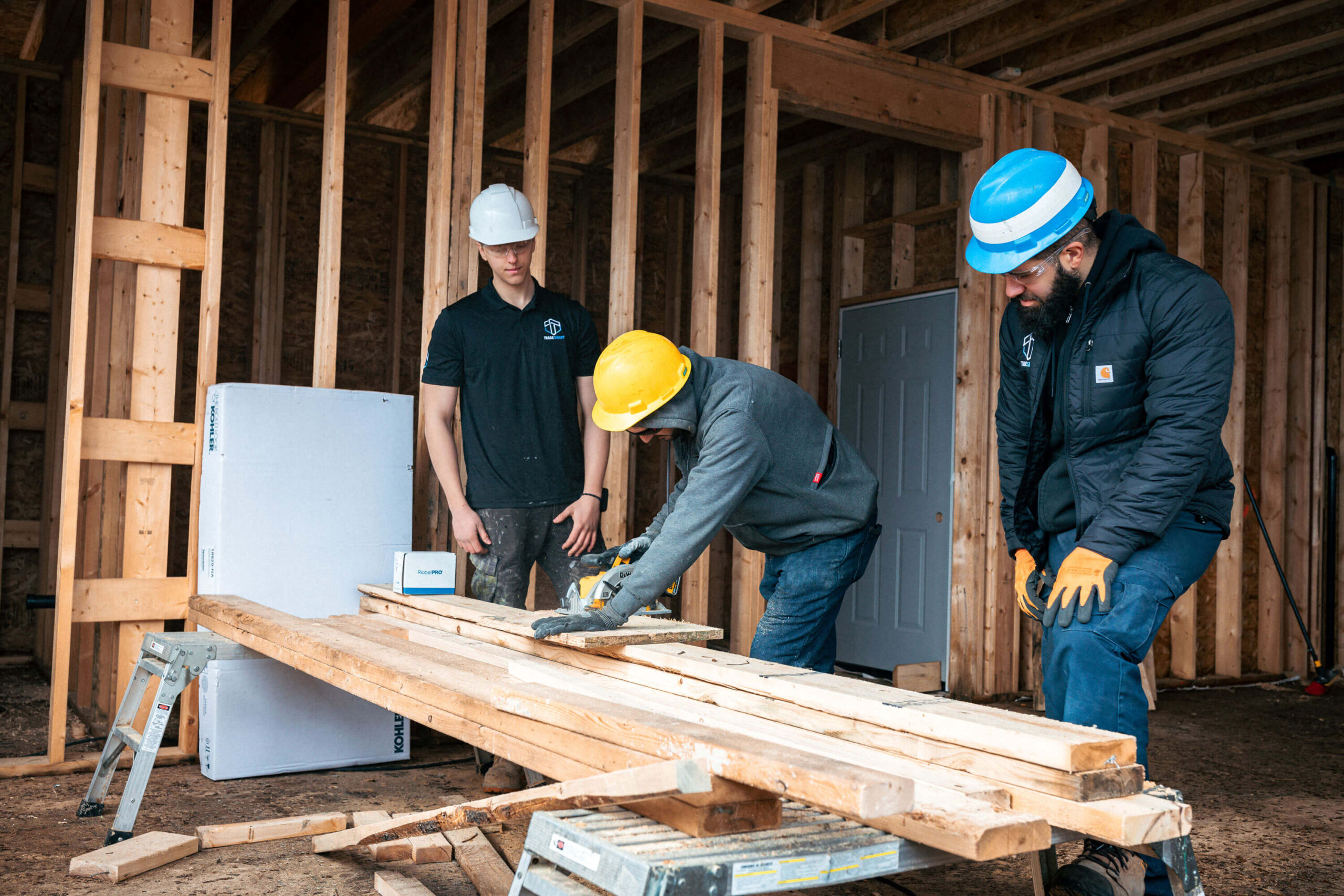Ontario needs over 100,000 new tradespeople in the next five years. With all that demand, getting an apprenticeship should be easy. However, it is the most difficult step in becoming a journeyperson. This is partly because companies cannot afford to take on poor apprentices, and partly because some would-be apprentices feel that the grunt work should be done by others. So the short answer to the question is Yes, it is hard to get an apprenticeship, and below we explain why.
Doesn’t Everyone Get an Apprenticeship?
It seems like every month there is a new announcement that Ontario is in dire need of more skilled tradespeople. At the end of 2023, the estimate was that 100,000 new tradespeople in construction alone would be needed by 2030. And now in 2024, the figure has climbed to around 140,000. With all this demand, it would be reasonable to assume that getting an apprenticeship would be easy. Unfortunately, the reality is far different. In fact, it turns out that this is the hardest part about becoming a journeyperson. It is the point where the largest number of people are excluded from the tremendous opportunities available in the trades.
It is challenging to get a complete picture of how hard it is to get an apprenticeship in Ontario. The reason is that one of the main ways to get signed is through personal connections. There aren’t any good data on this, but we do know that most people don’t have access to a friend or family member who can get them an opportunity.
What we do have data on is the percentage of students who graduate from pre-apprenticeship programs who get signed as apprentices. In the majority of trades, less than 30% of people who start a pre-apprenticeship program end up getting an apprenticeship, and in some cases it is as low as 10%. Why then, is it so hard to become an apprentice? One of the main reasons is that for most companies, they would rather not take on a new apprentice than hire a bad one.
No Apprentice is Better Than a Bad Apprentice
Many of the companies we work with could take on more work and more licensed journeypersons. Most Trade Smart certified companies would immediately hire several more journeypersons, if they were available. The problem is, most journeypersons are already working for other companies. Poaching a competitor’s employees may be a viable short-term strategy, but it rarely works in the long run because those employees often return to the original company, or go elsewhere when they are poached again. Poaching also does not address the overall shortage of tradespeople. So the best long-term strategy is for all companies to bring new talent into the trades.
But bringing new people into the trades means bringing in new apprentices and pre-apprentice candidates. As is covered in more detail in another blog, taking on a new apprentice is a costly undertaking, so companies do not do this lightly. In fact, most companies would rather not hire an apprentice than hire a bad one. The main reason is that a bad apprentice introduces uncertainty into the company’s operations. The most obvious example of this are questions like, “will the apprentice show up for work today?” or “will we have to redo the apprentice’s work?” At a business level, a bad apprentice also means that the company doesn’t know how much work it can take on. In most cases, companies would rather stick with their current staff and workload, even if it feels untenable, than take on a bad apprentice and over-commit to new projects. When a bad apprentice drops the ball, the company is then in an even worse position, having to complete more work with no more staff.
Everyone Starts at the Bottom
If you are looking to get into the trades, it is imperative that you show your employer that you will be a good apprentice. At its core, this means that you must be a professional, but even before that, you must understand a key point about the structure of trades work. Everyone starts at the bottom. And this means you start by doing a lot of things that some people think are beneath them.
But this “menial” work of cleaning, organizing, staging equipment and supplies, etc. is the foundation of all trades work. The glamorous, technical tasks cannot happen without meticulous preparation. Entry-level employees must learn this through experience from day one. It is why apprenticeships have been modelled this way for hundreds of years, and it is not going to change anytime soon.
Everyone starts out doing this work, and most people continue to do it for years as they take on more technical tasks as well. It doesn’t matter that your grandpa taught you how to use a table saw, that you rebuilt your cousin’s Subaru, or that you learned electrical theory in a pre-apprenticeship program. You don’t get to skip ahead and leave the grunt work to others.
Progress is Probable
Starting at the bottom with a professional attitude will lead to great opportunities in the trades. Unlike other jobs where advancement is difficult if not impossible, career progression in the trades is extremely likely. It won’t happen right away, so you will have to learn the skill of delayed gratification. But for tradespeople who are consistently professional, they will have more opportunities than they can handle. The good thing is that delayed gratification not only helps you in the trades, it is associated with a whole range of positive outcomes in people’s lives. It is a truly transferable ability.
Progressing in the trades depends on being able to get signed as an apprentice. And even with the critical shortage of tradespeople, this is still the most difficult part of the process. At Trade Smart College, we want to give our students the best chance of success, so we don’t accept any student into our program unless we have an apprenticeship opportunity for them.
Conclusion
It is gratifying to see that many more people are considering careers in the trades. But despite all this interest, the most difficult step is still getting signed. Companies are reluctant to make the significant investment required to take on an apprentice, unless that person has demonstrated that they can be a professional and that they understand the value of starting at the bottom. At Trade Smart College, we currently have apprenticeship opportunities in all five of the trades we support for our upcoming semesters. Contact us to schedule an information session or drop by for a visit.






